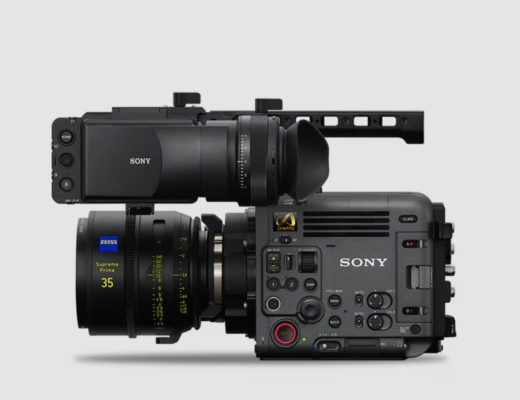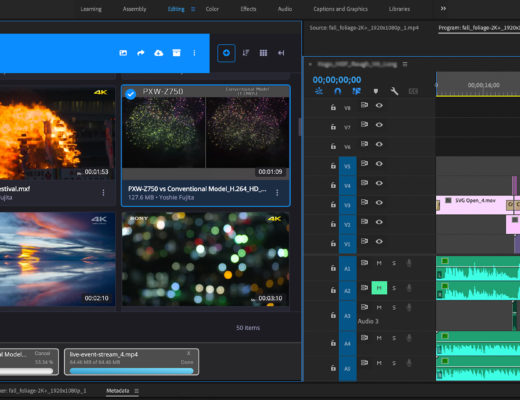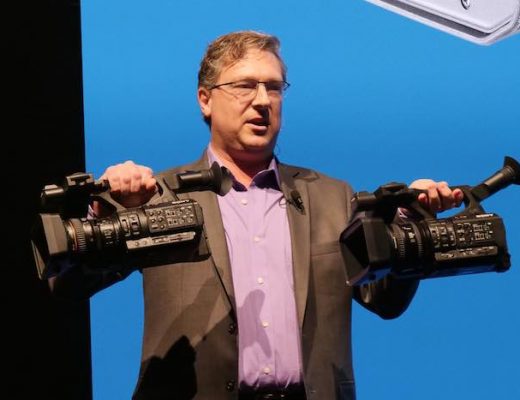Production Introduction Blog 1
By: Antonio “T.J.” Doctor – Production Supervisor
The Sundance Institute Directors Lab is a learning and discovery experience for emerging directors. The filmmaking tools and production process used at the Directors Lab have a direct impact on the creative decisions made during the entire production process of making a feature film. Each year, eight directors and their scripts are chosen for this workshop. They are supported by a production and post-production crew of 45 industry professionals and technicians at the Sundance Resort in Utah. The directors (referred to as “Fellows”) chosen to participate in the Directors Lab are immersed in the production experience, moving through the entire process in just under a month’s time. With the accelerated schedule there is no time for a “dailies processing” step, so a “direct to edit” solution is required. This year the participants at the Sundance Institute Directors Lab were equipped with the Sony F55 camera.
Cinematographers Andrew Reed, Nick Bentgen, Anne Etheridge and Jay Keitel have been chosen to support these Fellows in their journey through the Lab. These cinematographers are using the Sony F55 for the first week of prep before going into principal photography of selected scenes from the Fellows’ feature-length scripts. During this prep week the cinematographers and camera assistants (Bryce Maschino and Jason Ball) tested the F55 under various light conditions and capture settings in order to access its functionality and reliability. The results thus far have been amazing and the Directors Lab has taken a huge step in high end digital imaging, editing and projection in support of emerging filmmakers.
Production Blog 2
By: Bryce Maschino – Camera Assistant
At the Sundance Institute Directors Labs, we have a very quick turnaround between shoot and delivery, so our gamma choices have to take that into consideration. For our first camera test, the camera assistants wanted to look at the response of the different gamma curves. Gamma curves have developed into such an important tool for cinematographers that the F55 has incorporated a button on the side of the camera to quickly jump between them. Many productions can take advantage of the great RAW features or extended S-Log2 of the F55. Here at the Directors Lab, we have seen wonderful results with the basic mpeg format the F55 offers. With the F55, Sony has catered to the filmmaker in a high-end production as well as the run-and-gun independent production.
We noticed some very pleasing results with Hypergamma settings. They offer a little less contrast than the standard gamma profiles, especially holding detail in the shadow regions. When considering aesthetics and preservation of detail we would recommend Hypergamma for a lower contrast look or standard gamma for a basic Rec 709. Hypergamma 3 worked really well for a “real life” look in a controlled lighting environment. Hypergamma 7 preserves quite a bit of detail in the highlights, and with a quick curve adjustment in post one can create some very pleasing results. A consideration to note with the Hypergamma settings is that your middle grey point shifts on the waveform as you switch between them. You should do a little testing to establish where the grey point should be, and if you are lighting with a meter, you may need to rate your ISO slightly higher or lower, always considering your post options while shooting.
Post Production Blog 2
By: Michael Philips – Post Production Supervisor
Here at the Sundance Institute Directors Lab, post-production’s most important factor is the immediate availability of the filmmakers’ footage to the editors. Using the Sony AMA supplied plug-in, editorial accesses the footage directly into the Avid Media Composers—the editing systems being used in post. This is a real time, direct link to the footage without any further compression via a transcode occurring. The directors and cinematographers are able to see exactly what was shot and the footage holds all the same image quality from ingestion to the final master—from there the different deliverables are created as needed.
The process itself is very simple and straightforward – mount the SxS cards in the Sony Card readers attached to the editing systems. From within Media Composer, the AMA plug-in allows direct access to the SxS card and clips on that card. The editor plays, reviews, selects, and copies directly to the local or shared storage, allowing the editing process to begin within minutes.
The success of the Lab is based on many components, but the Sony F55 is clearly a key contributor to that success. It fulfills the artistic needs of the director’s vision, maintains the utmost image quality, and ensures a streamlined post process.



Photo credit: Jonathan Hickerson

Filmtools
Filmmakers go-to destination for pre-production, production & post production equipment!
Shop Now













